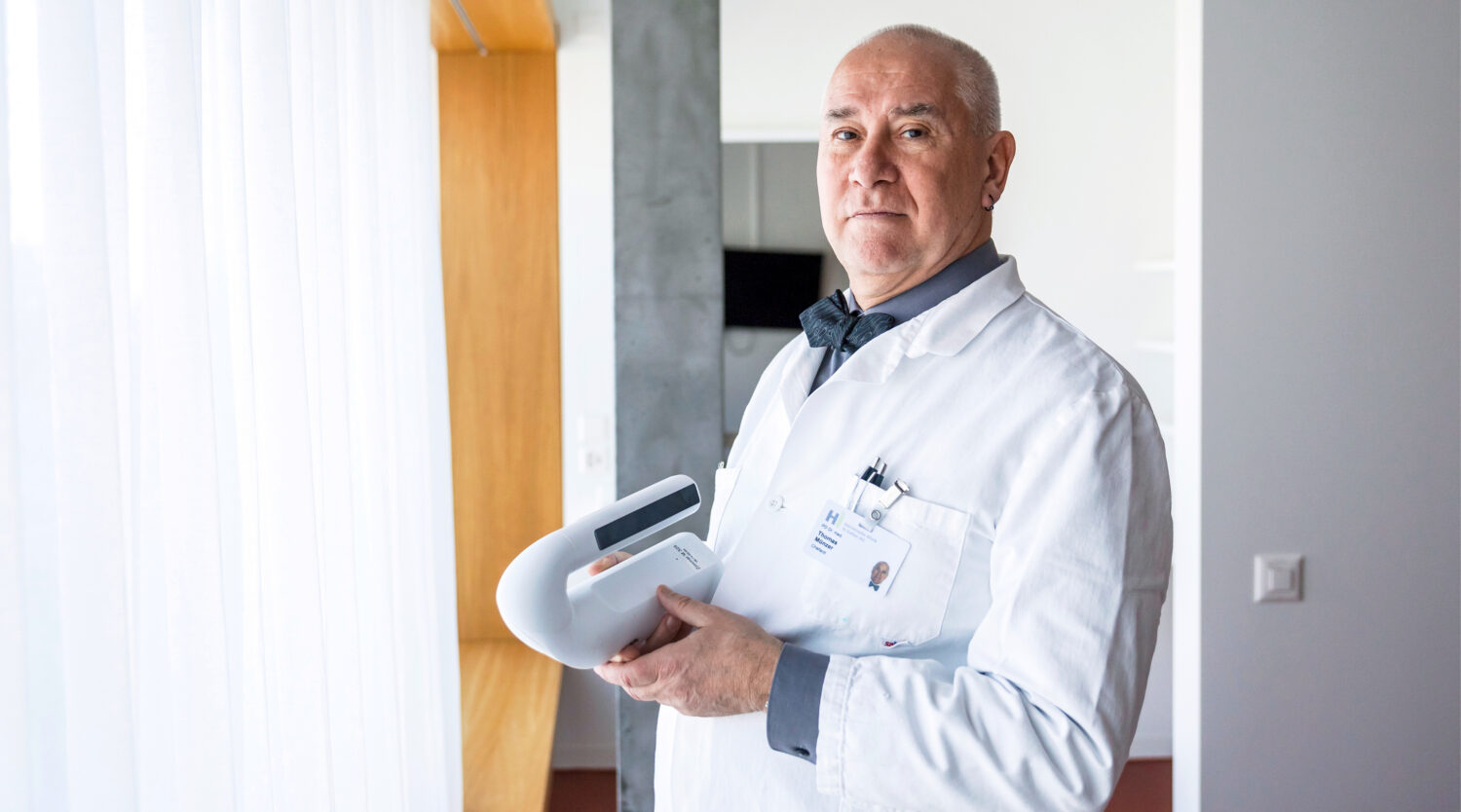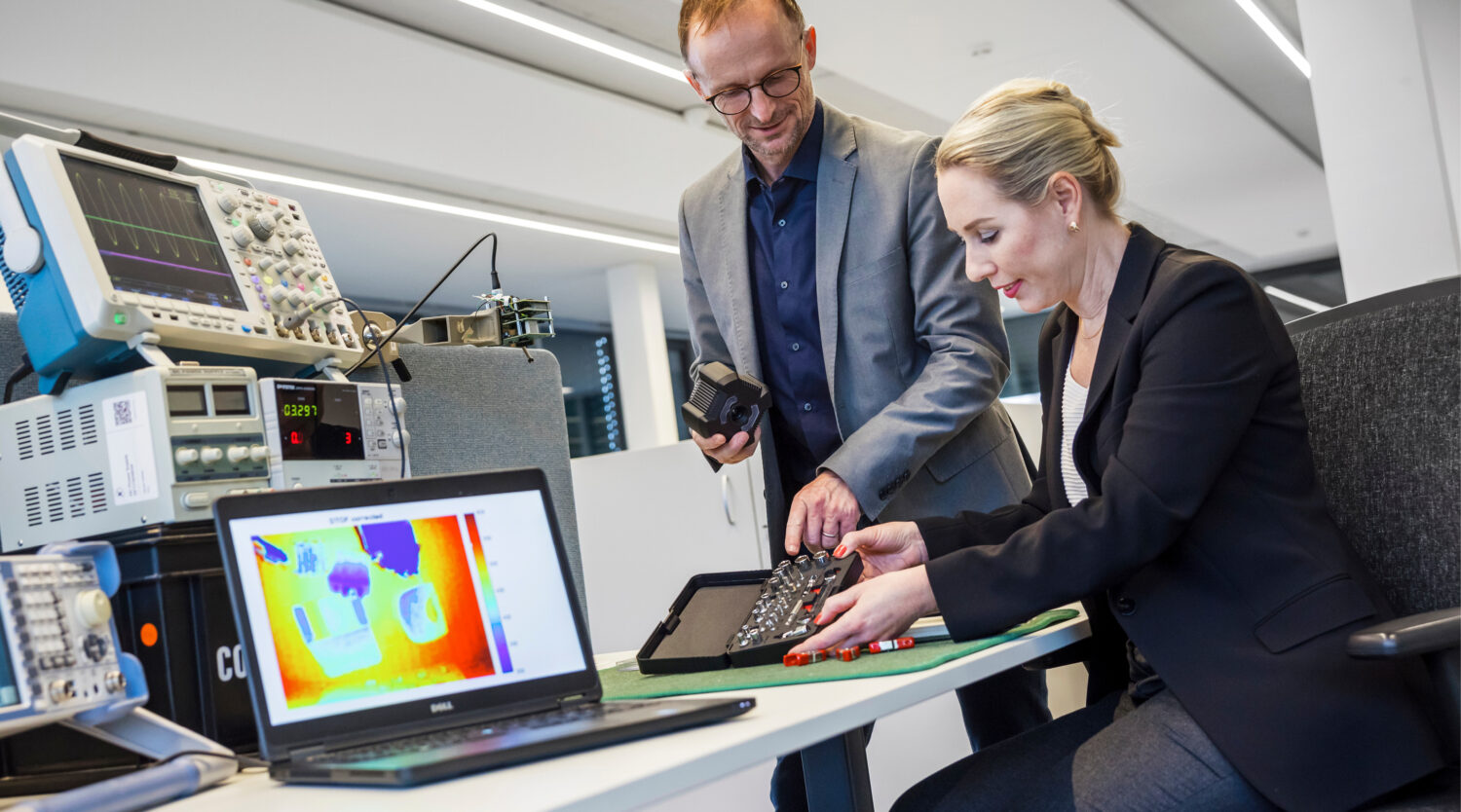Impact
Innosuisse accelerates the transfer of knowledge and technology
What is the impact of Innosuisse funding? We are hard at work on this question. We are therefore pleased to present some key figures from our impact monitoring 2023 for the impact goal of knowledge and technology transfer.
Knowledge and technology transfer (KTT) concerns the exchange of know-how and technologies between research institutions and innovative organisations from business and society. Innosuisse plays a central role in this and speeds up the transfer to a significant degree.
With our funding instruments, we aim both to accelerate the translation of scientific findings into practice and to incorporate economic and social needs into research, enriching it in the process. The mutual exchange of knowledge and technologies creates synergies. These in turn help to overcome challenges and successfully bring innovative solutions to market. With its contribution to the KTT, Innosuisse makes a decisive contribution to bolstering Switzerland’s innovative strength and promoting economic development.
KTT can be seen in various facets, from the joint ideation at the Innovation Boosters to the realisation of joint innovation projects between SMEs and universities, and from the registration of intellectual property to the founding of spin-off companies. Innosuisse funding accelerates the transfer of knowledge and technology in a variety of ways. We cordially invite you to accompany us on a short impact journey.

Gérald Walti
CFO of Innosuisse
START: DEVELOP IDEAS AND CHECK FEASIBILITY

98 out of 129 ideas boosted by the Innovation Boosters are being pursued.
The generation of new ideas by research institutions, companies and society is of great importance for strengthening knowledge and technology transfer (KTT) – especially through mutual exchange. These networks give rise to innovative, often radical solutions to problems that integrate the latest research findings and technologies. The aim is to test market requirements and implement fundamentally new solutions. With the Innovation Booster funding instrument, such innovative approaches can be developed openly and collaboratively and lead to concrete innovation projects.

53% of SMEs that have received an innovation cheque are working with a research institution for the first time.
KTT is based on successful collaboration between companies and research institutions. Getting started is not always easy, especially for small and medium-sized enterprises (SMEs). The support provided through innovation cheques is a quick way for SMEs to arrange for an initial feasibility study and at the same time test cooperation with selected research partners. Innosuisse is thus also accelerating knowledge and technology transfer for SMEs with less research experience.

48% of innovation projects without implementation partners led to concrete results for the further application of research in follow-up projects.
Researchers often come across innovative ideas with great market potential in the course of their work. However, research still needs to be given a more concrete framework and driven forward. Sometimes researchers are unable to find partners for further implementation on the market. One reason for this are the high risks involved in implementation. Innosuisse therefore also supports innovation projects by research institutions without implementation partners in order to speed up KTT. This reduces the risk in the case of radical innovations that can later be brought to market by an SME, a large company or a spin-off. The feasibility of the research application was demonstrated in an additional 31% of innovation projects without implementation partners.
NEXT STOP: IMPLEMENTATION

26% of innovation projects with implementation partners already resulted in registering patents, trademarks, designs or licence agreements at the end of the project.
These intellectual property rights are valuable for KTT. Managing intellectual property often forms the basis for commercial exploitation of an innovation and indicates that the transfer of knowledge will remain anchored in the economy for the long term even after the property rights have expired. Such property rights are planned for a further 13% of innovation projects.

106 start-ups emerged from 147 BRIDGE Proof of Concept projects from the period 2017-2021 by the end of 2023.
This corresponds to a rate of 72%. The BRIDGE projects enable young researchers to bring their scientific results to market-maturity. Establishing start-ups consolidates the transfer of knowledge and technology to the market. With this funding instrument, Innosuisse and the SNSF are strengthening and accelerating the implementation of scientific know-how into practice. The 92 Proof of Concept projects funded since 2022 have already given rise to an additional 24 start-ups.
MOVING FORWARD TOGETHER: KTT BEYOND THE PROJECT

62% of innovation projects with implementation partners result in further collaboration between research and implementation partners after project completion.
Continuous collaboration between research partners and companies is also of great importance for accelerating KTT. This results in additional joint research and development activities. Innosuisse thus not only promotes transfer between research and the market, but also strengthens these collaborations over the long term.

In 1 out of 6 innovation projects with implementation partners, the company hires staff of the research partner at the end of the project.
In 16% of projects, the transfer of knowledge also takes place through the mobility of research staff. When researchers are taken on by companies at the end of a project, their scientific expertise can be applied more quickly on the market.
Methodology
Innosuisse’s impact monitoring is based on end-to-end data collection from all funded implementation and research partners of innovation projects, both with and without implementation partners, from SMEs with innovation vouchers, and from all start-ups participating in the Core Coaching programme. The surveys are generally carried out at the end of the projects, and then again three years later. The indicators presented are taken from the 2023 impact monitoring. The figures for the Innovation Boosters are based on reporting data from all ongoing initiatives. The indicators surveyed during monitoring refer to the strategic goals of the Federal Council and the formulated outcomes of innovation promotion.


